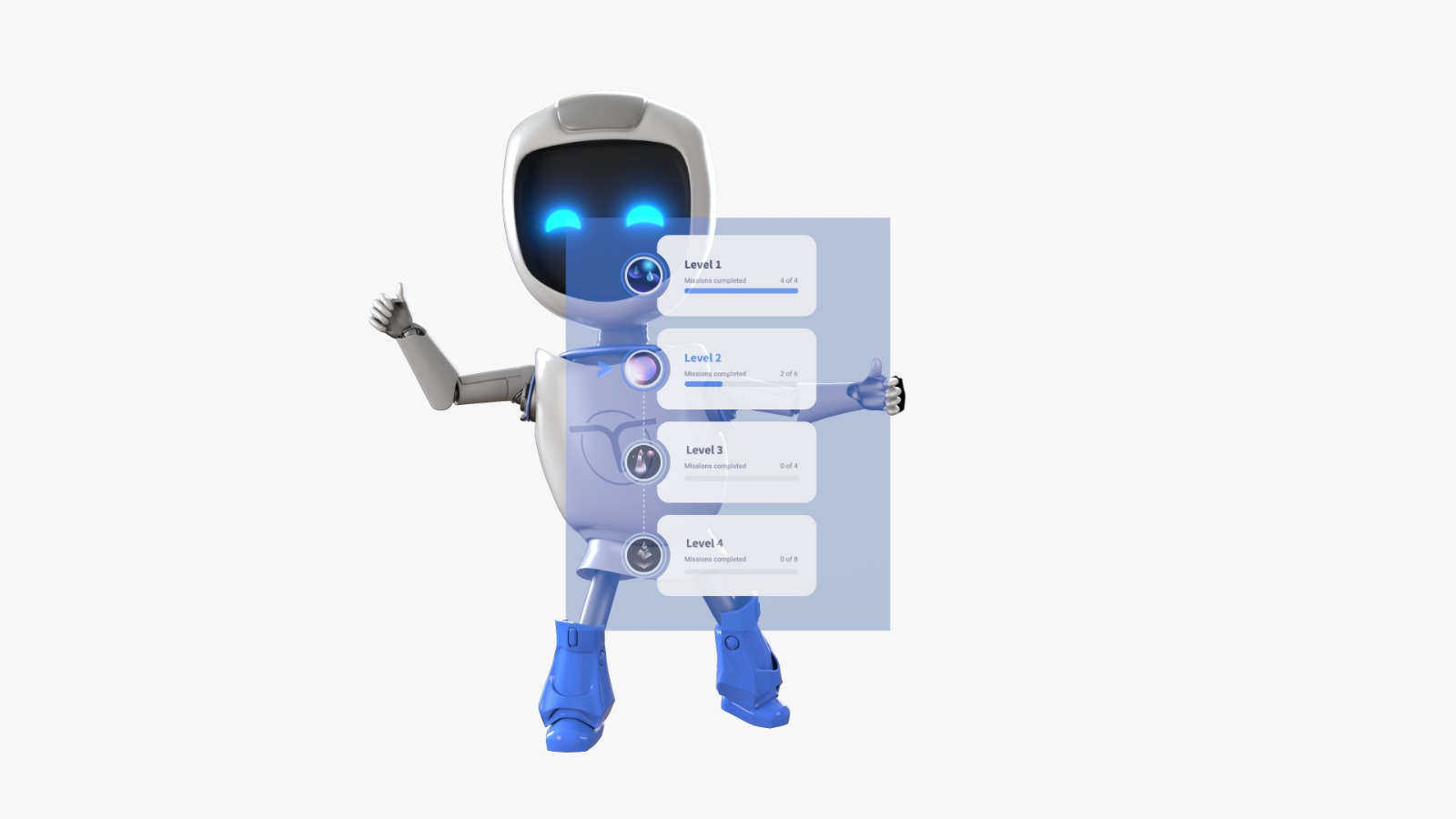Creating employee training is never a walk in the park. It’s a complex process, from the initial idea and setting objectives to the actual course creation. It demands a significant investment of time and resources to ensure the final result translates into better productivity and enhanced company performance.
First things first, you need a clear objective. This is the foundation of your training program. Do you need to boost sales, or are you aiming to improve employee retention with a more efficient and engaging onboarding process? Once these goals are crystal clear, everything else will fall into place more smoothly.
Another crucial and time-consuming part of the process is the creation of the training itself. Does your company have the necessary resources for this, and if so, how effective and well-distributed can the training be? In many large companies, this course creation process has shifted to modern, AI-based platforms. Why? Beyond the ease of creating a custom training program from scratch, the experience is much more engaging. Employees tend to retain more information and, in turn, apply more of what they’ve learned, contributing significantly to business success.
What to Keep in Mind: Essential Insights for Crafting a Training Plan
Ready to dive into the nitty-gritty of creating an employee training plan? Here’s what you need to know!
1: Pinpoint Your Business’s Training Needs
The first step in developing a training plan is a thorough assessment of your training needs and existing roles. According to a Harvard Business Review study, accurately identifying skill gaps is key. Here’s how you can do it:
- Job Analysis: Review the requirements and competencies needed for each role.
- Performance Evaluation: Analyze performance reviews to identify areas needing improvement.
- Employee Feedback: Talk to employees about their development needs.
2: Set Clear Objectives
Aim for the SMART goals: Specific, Measurable, Attainable, Relevant, and Time-Bound goals. According to a survey conducted in May 2022 by Harvard Business Review Analytic Services, 82% of respondents considered the use of strategic goals to be “extremely critical” or “very critical” to their organization’s overall success.
Creating a good training program involves setting clear objectives and requirements. Ensure the training program is well-organized and communicated clearly to employees. A study by Training Industry indicates that detailed planning and effective communication contribute significantly to the success of training programs.
3: Choose an impactful solution: AI-powered microlearning
The goal of an AI-powered microlearning platform is to deliver efficient learning methods through bite-sized modules, making them easy to understand and process. This seamless process saves time and costs for employers. It allows you to create personalized training based on your business needs, harnessing peer-to-peer learning and gamification to support sales and retail reps in their result-generating activities, driving performance, market readiness, and customer impact.
Code of Talent’s mission is to equip your professionals with the real-time knowledge, skills, and support they need to successfully deliver on their objectives.
Depending on your identified needs and set objectives, you can choose the appropriate training for corporate clients. Code of Talent’s AI-powered microlearning platform delivers highly engaging microlearning experiences for:
- Accelerated Onboarding: Address the challenge of quickly integrating new hires by providing role-specific, AI-driven onboarding that accelerates their path to productivity.
- Product Training: Ensure staff are fully informed and confident with new and existing products through engaging, AI-tailored training, minimizing misinformation and boosting sales confidence.
- Sales Campaign Implementation: Overcome the struggle of keeping sales teams aligned with market demands through AI-customized training on sales campaigns, enabling effective strategy execution.
- Ongoing Skills Development: Combat skill gaps and maintain high performance with continuous, personalized learning experiences that keep skills sharp and employees engaged.
- Market and Customer Execution Support: Facilitate effective market execution by supporting reps in critical activities such as customer interactions, product showcasing, collecting market feedback, etc, all in real-time.
- Compliance and Operating Procedures: Ensure that teams adhere to compliance standards and follow operating procedures through easily accessible and friendly modules focused on regulatory requirements and best practices.
The platform offers a wide range of training creation aimed at growth, development, and efficiency for both employees and the company.
4: Keep Training Relevant and Engaging
Training content must be relevant and tailored to employee needs. Studies show that active learning, which engages employees in the process, is more effective. L&D teams design training programs that align with company interests, saving employer time and enhancing team efficiency.
For instance, an effective onboarding program can boost new employee productivity by over 70%, according to The HR Digest. With Code of Talent, companies can quickly and easily develop strategies to optimize current procedures.
Integration programs play a big role in retaining valuable employees. Our award-winning microlearning platform provides customized, engaging, and practical on-the-job training that harnesses peer-to-peer learning and gamification to support sales and retail reps in their result-generating activities, driving performance, market readiness, and customer impact.
5: Continuously Evaluate and Improve
After implementing the program, evaluate its effectiveness through various methods, such as:
- Employee Feedback: Gather opinions on the training’s usefulness and relevance.
- Performance Evaluation: Monitor if there have been improvements in employee performance.
- Program Review and Adjustment: Make necessary changes based on feedback and results to better meet organizational needs.
Conclusion
A well-structured training plan not only enhances employee skills but also boosts satisfaction and development. The positive effects are felt on both sides, driving growth and evolution for employees and the company. By following the described steps and leveraging L&D team support, you can create an effective training program that benefits both employees and the organization. Contact Code of Talent to learn how to set and achieve your training goals. Our microlearning platform emphasizes a personalized approach and continuous evaluation to ensure long-term success of training initiatives.
Photo credit: Pexels





